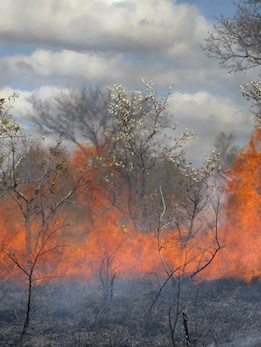Famously known as the “fire continent”, Africa is home to more than two thirds of the world’s fires. These fires not only release greenhouse gases, but when not properly managed, they result in widespread destruction of property and livelihoods. Using earth observation data to better understand the wildfire patterns and processes and support decision making across the Southern Africa region can greatly benefit people and ecosystems.
Objectives and priorities
The Southern African Fire Network fosters collaborative efforts in fire monitoring and management across Southern Africa. Major activities include collaborative research and training on the use of remote sensing and other geospatial information technology to achieve more effective and appropriate fire management policies and practices in southern Africa. Essentially the Network serves as a link, contact and support for the Southern African fire management community and researchers.
Accomplishments
Since its inception in 2000, SAFNET has convened wildfire researchers and the practitioner community from across the region to share new discoveries in wildfire science, foster cooperation, and advance dialogue.
There have also been collaborative research initiatives conducted with universities from abroad, thereby encouraging north-south cooperation in areas of wildfire science. This has led to the establishment of joint regional and international fire science projects and validation sites.
The network has also increased researchers’ exposure to state-of-the-art satellite-based fire monitoring products and methodologies to calculate fire emissions and biomass estimates for fuel monitoring.
Recent papers by SAFNET members include:
Chanza, N., Chigona, A., Nyahuye, A., Mataera-Chanza, L., Mundoga, T., & Nondo, N. (2019). Diagnosing barriers to climate change adaptation at community level: reflections from Silobela, Zimbabwe. GeoJournal. doi.org/10.1007/s10708-018-9890-3
Ribeiro, N, Ruecker, G, Govender, N, Macandza, V, Pais, A, Machava, D, Chauque, A, Lisboa, Sa, N, & Bandeira, R. (2019). Interactions between landscape and fire frequency in relation to structure and botanical composition of savanna ecosystems. Ecology and Evolution. 9(14):8253-82649. doi: 10.1002/ece3.5400
Donaldson, J. E., Archibald, S., Govender, N., Pollard, D., Luhdo, Z., & Parr, C. L. (2018). Ecological engineering through fire-herbivory feedbacks drives the formation of savanna grazing lawns. Journal of Applied Ecology. doi.org/10.1111/1365-2664.12956



